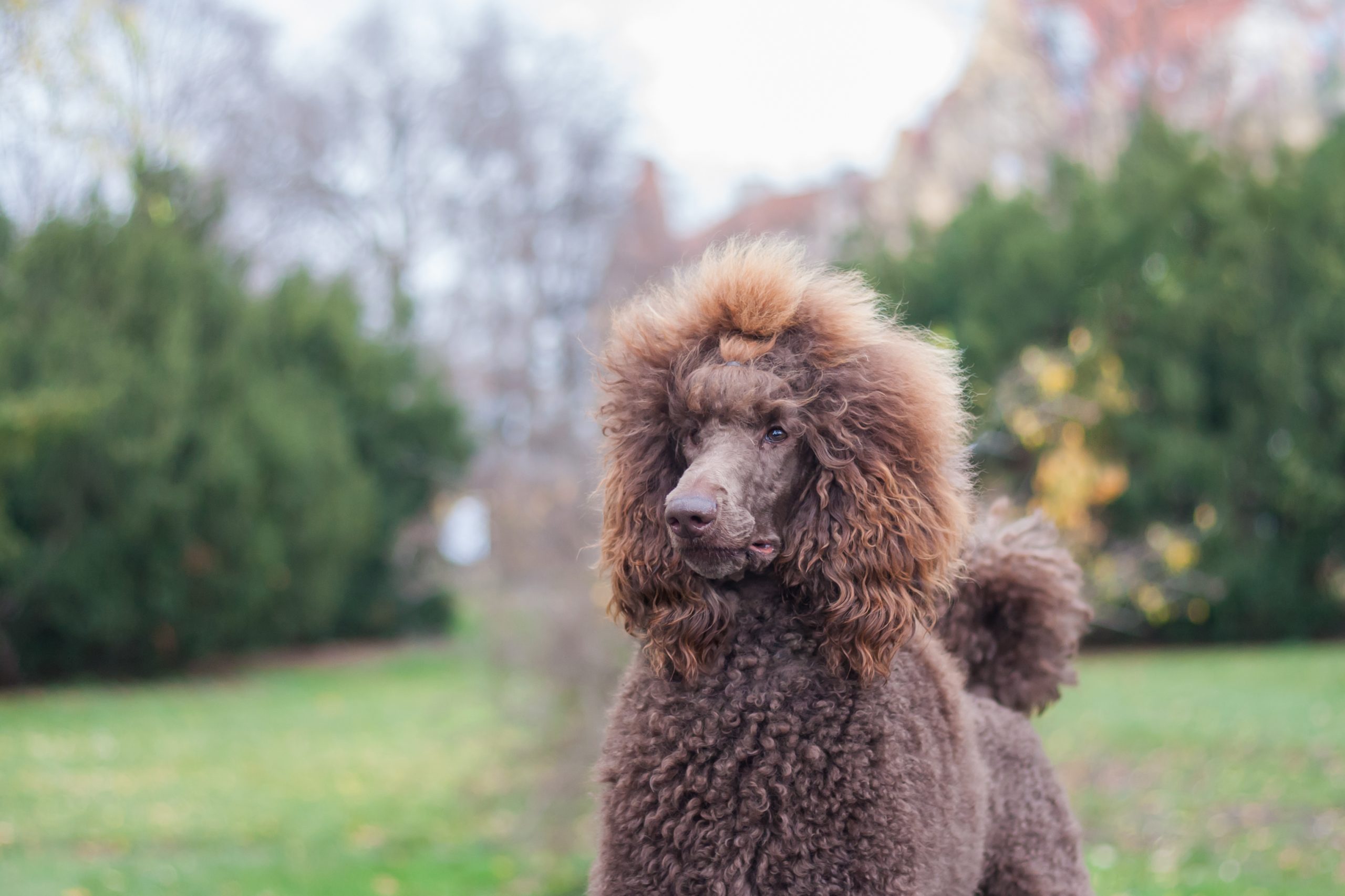Standard Poodle
The Standard Poodle has a murky background with possible origins in Central Asia and France. Curly-coated dogs imported from Hungary, Russia, Germany, and France, were further developed into the current breed in Germany. They were principally working dogs, used as water retrievers.
Standard Poodles are medium-sized squarely-built dogs. The average dog is about 22 inches tall at the shoulder and weighs 50 to 75 pounds. Again, females are slighter in stature.
All poodles have a dense and coarse coat with tight curls. They have continually growing hair like people that sheds minimally. The hypoallergenic characters of their coats are much sought after.
Standard Poodles are highly intelligent, always ranked No. 1 or 2 among the smartest dog breeds. They have a lively nature that is playful, enthusiastic, and adventure-seeking at once. Poodles, however, can be even more cautious with strangers than Bernese Mountain Dogs, though rarely aggressive.
Poodles are susceptible to Addison’s disease, epilepsy, cataracts, hip dysplasia, and entropion whereby the eyelids roll inward. Miniature Poodles can pass along luxating patellas, diabetes, and Cushing’s disease. Poodles have a lifespan of 10 to 15 years.
Miniature Poodles, who have most of the traits of Standard Poodles except for size, are used to breed Miniature Bernedoodles. A breeder may also use a toy poodle.



